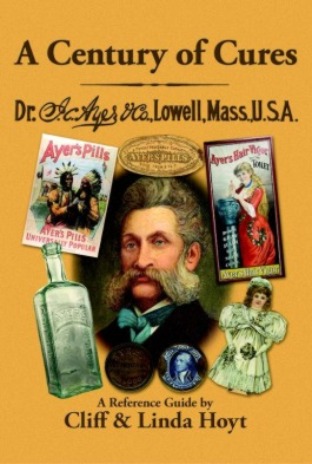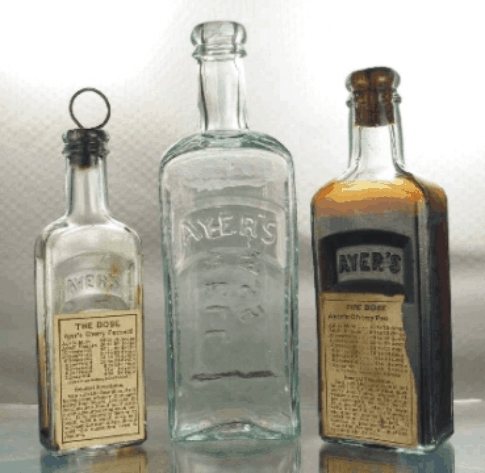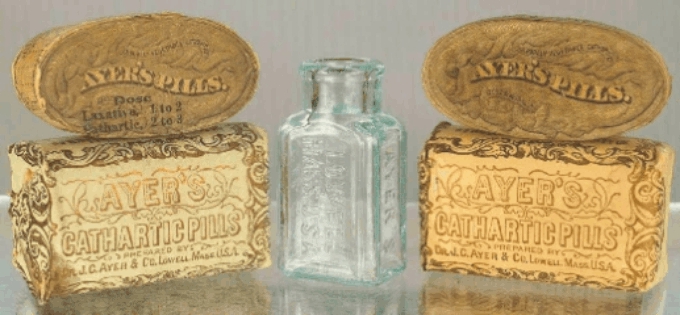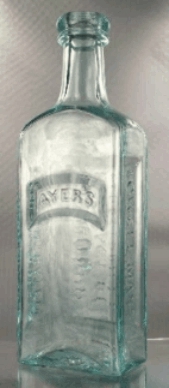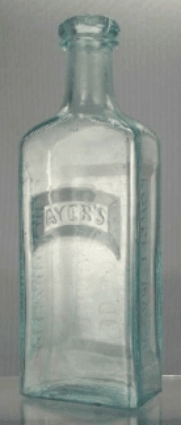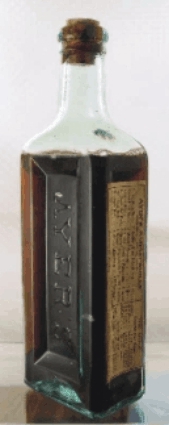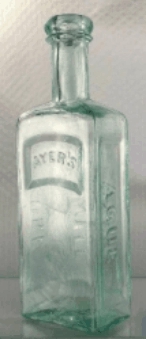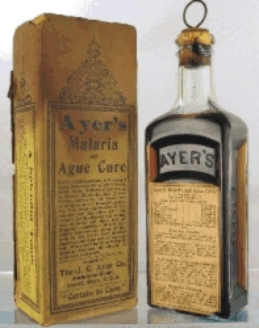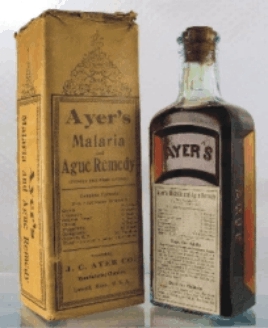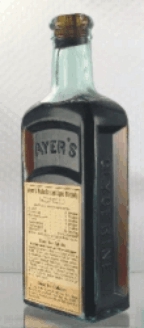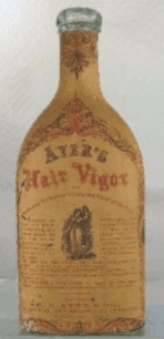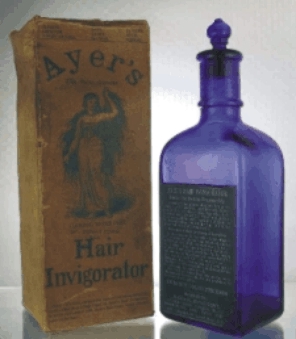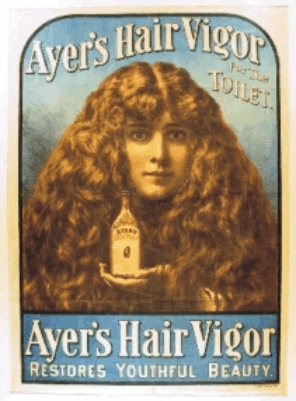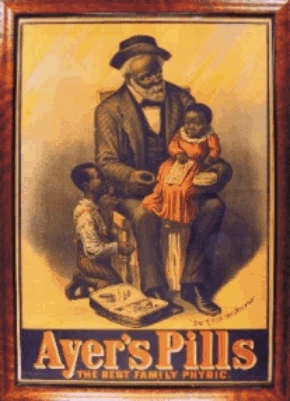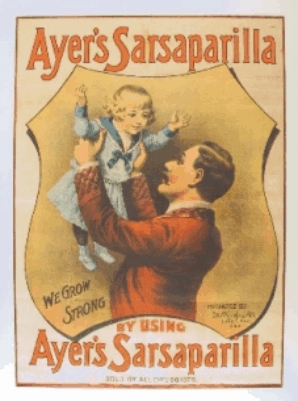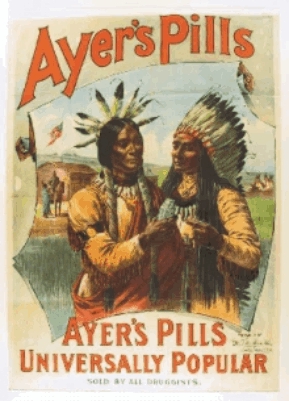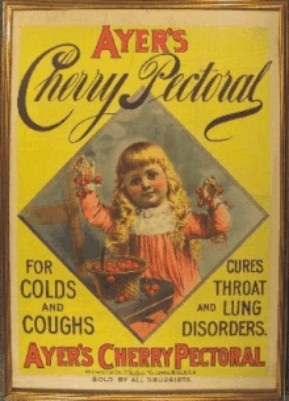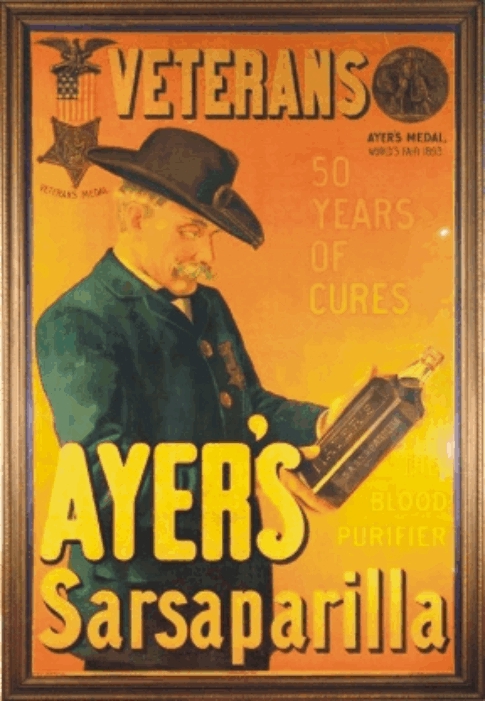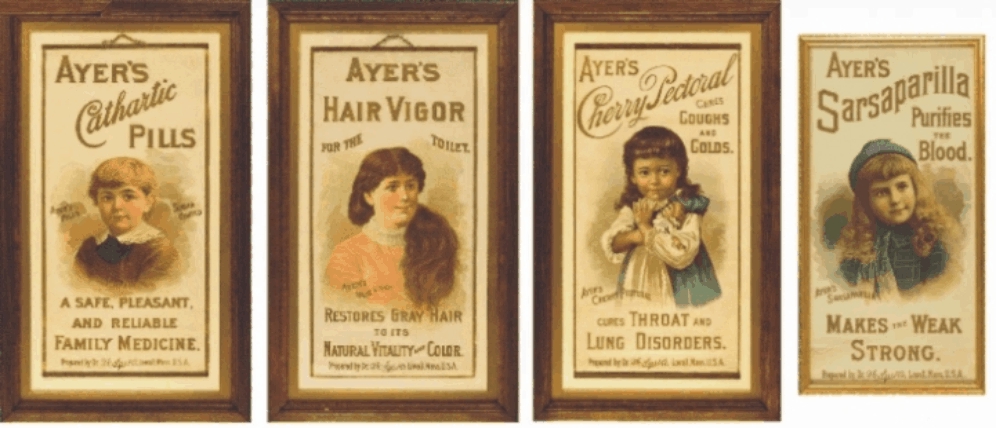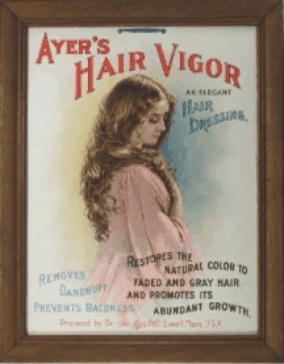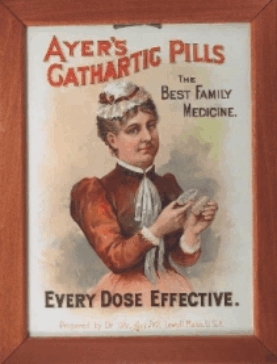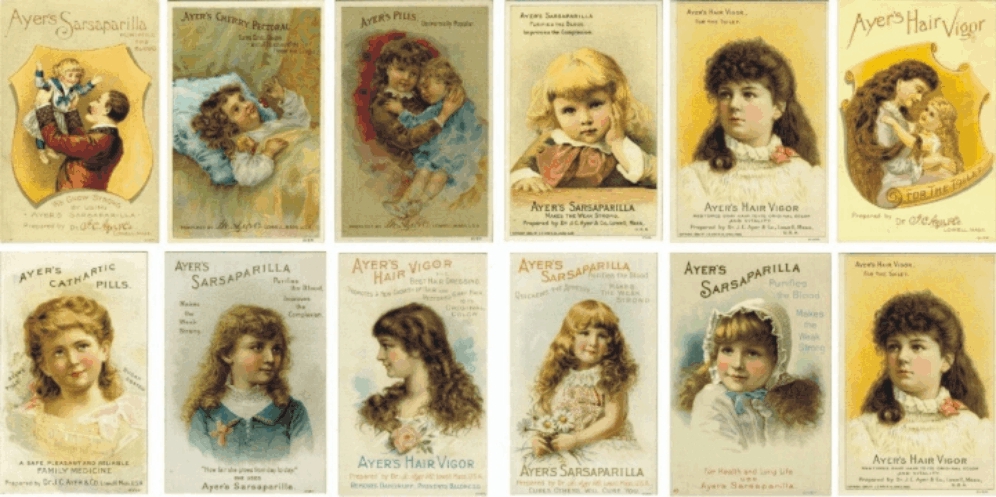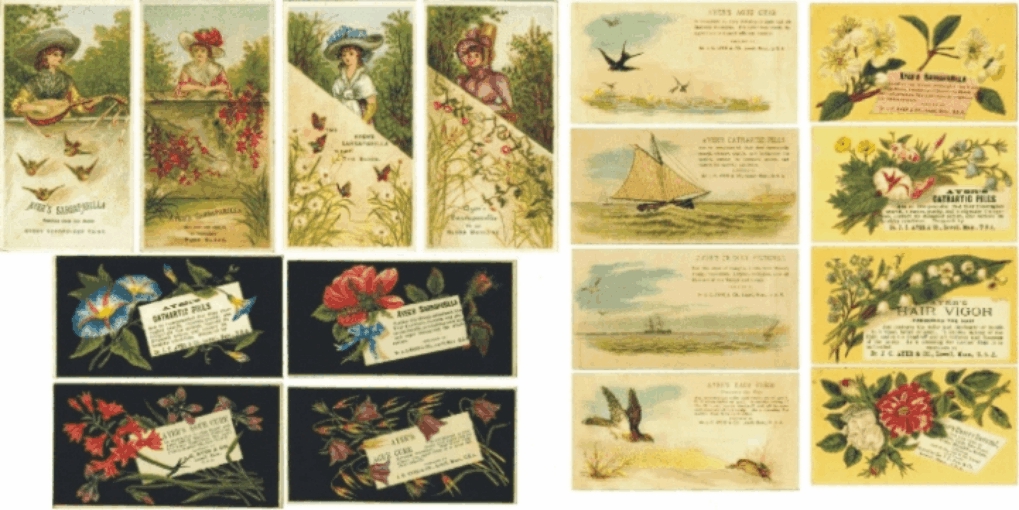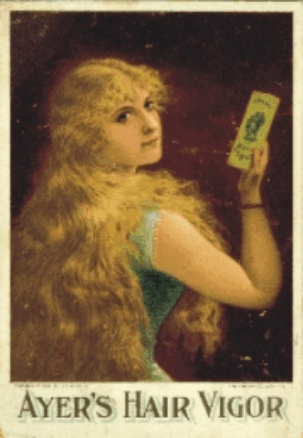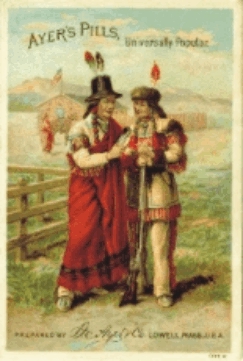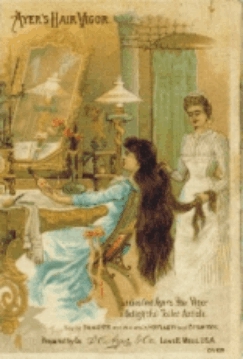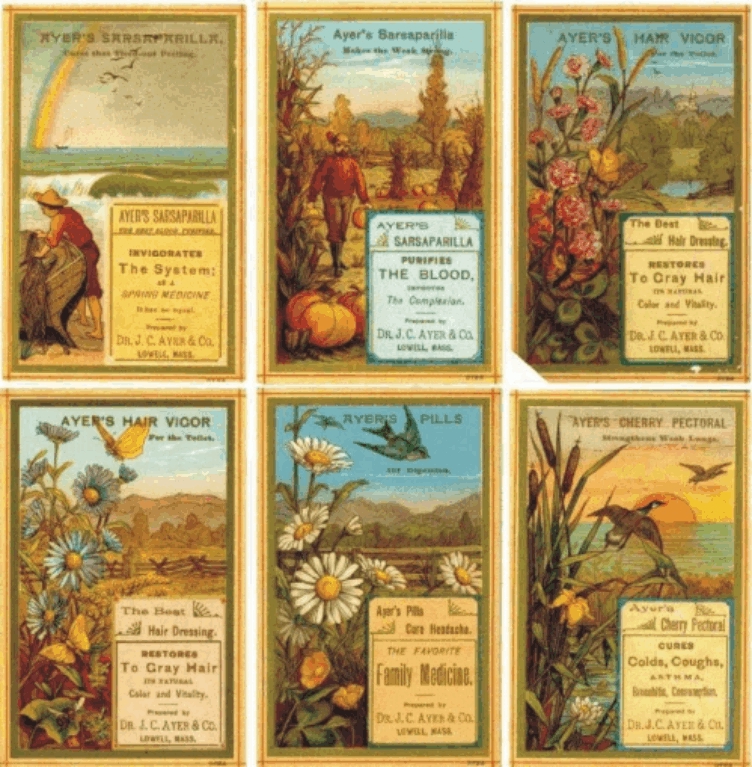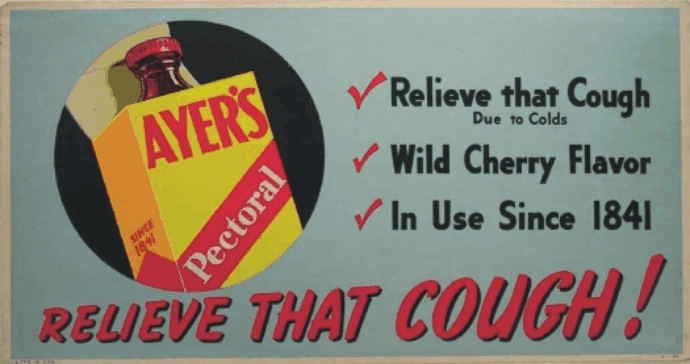The manufacture of these medicines of course required more room than the Jackson Street building could
furnish, and the firm was obliged to seek a new location. The large building on Market Street was therefore
erected in 1857, and the whole establishment moved thither. In this building the manufacture was carried on
until 1872, when the old Green School building on Middle Street was purchased and made a portion of the
manufactory, and these two structures comprise the present establishment. In 1869 [sic] the Hair Vigor was
first produced and since then no other medicine has been compounded, though the firm acquired Hall's Hair
Renewer by purchase in 1870. Work has been continued without material interruption in the Market Street
building since its erection, with the exception of a few months from August, 1864, when an extensive fire
compelled its evacuation. During the interval the goods were made and packed in the old church building,
since converted into Barristers' Hall, the office being in the attic. The business, through the thrift, energy, and
perseverance of its founder, grew from an insignificant beginning into an establishment employing one
hundred persons, sending its manufactures to all parts of the globe, and printing an average edition of eight
millions of almanacs annually. It stands today a monument to a shrewd man, and is striking evidence of what
energy, directed by good sense, courage, and far-sightedness can produce.
Dr. Ayer held his title by virtue of a degree conferred by the Philadelphia Medical University, dated July 23,
1860.
In 1865 he made a tour of Europe with his family, visiting most of the capitals, and making extensive
purchases of pictures, statuary, and costly books. At Munich he purchased the statue of Victory which now
adorns Monument Square. This he presented the city, and it was unveiled with much ceremony in 1866.
The ceaseless activity in which Dr. Ayer lived at length began to tell upon his health, and rest was
imperatively demanded. Accordingly, he took the advice of his old physician, and in 1874 went again to
Europe. But his nature abhorred rest, and he was as active abroad as he would have been at home, and his trip
was of little avail. He returned early in 1875, and resumed his occupations with his old-time vigor. But many
crowding cares told upon his vigorous constitution, and three years later he died, July 3, 1878, at the age of
sixty.
Dr. Ayer was a man of indomitable energy, pluck, and perseverance. To him belongs the credit of making
Lowell a familiar word throughout the world, for wherever his medicines went- and no corner of the globe
was unvisited-the name of this city was carried. His untiring industry built up an establishment which is a
Lowell institution, and there are few citizens who do not feel a certain satisfaction from the fact that his
manufactory is located here.
During the summer of 1871 the citizens of Groton Junction signed petitions which were presented at the next
session of the legislature, asking that that part of old Groton be set off as a separate town under the name of
Ayer in honor of the Doctor. In 1871 he gave the town $10,500 for the purpose of aiding in the erection of
a town hall, and subsequently increased the amount to $30,000. The structure was dedicated October, 1876,
with appropriate exercises.
[End of the condensed article from the Lowell Courier of July 5, 1878.]
At the time of J.C. Ayer's death, the new development of chromolithography made possible the printing of
inexpensive, high quality color images. Between 1870 and 1900 chromolithography would dominate advances
in advertising with the introduction of trade cards, pamphlets, toys, games, posters, as well as the introduction
of color into the old standbys, magazines and newspapers. J.C. Ayer & Co. made copious use of this new
medium just as the had previously used almanacs and newspapers.
|
After J.C. Ayer's death the company developed additional products such as Comatone for the hair, Cherry
Pectoral Plasters to relieve cold symptoms, and SenopoS (perhaps a laxative, usually found labeled in
Portuguese but some English versions are also known). Later, perhaps to lessen the impact of the Pure Food
and Drug Act of 1906, Ague Cure became Ague Remedy in 1913. Around 1915 to 1923 the Ayer company
experimented with Hair Vigor by introducing a new "blue" bottle and offering Hair Invigorator. The Hair
Invigorator box states: "Note: We have changed the name of this preparation, formerly called Ayer's Hair
Vigor to Ayer's Hair Invigorator to avoid confusing it with Ayer's Hair Vigor which restores color to the hair."
[You may have to read this statement a number of times to not understand it.] Later still, additional new
products were introduced such as Helthtone, a stomachic tonic, Gestex, to help digestion, Nose Drops, and
Ayer's Tablets, still a laxative.
J.C. Ayer & Co. (later just Ayer & Co.) continued to manufacture medicinal products under the management
of Frederick Ayer until his retirement around 1893. Frederick Ayer was still president of the company when
he died on March 14, 1918. The company continued to operate in Lowell under the management of family
members and professional managers until it finally left Lowell around 1943.
|
